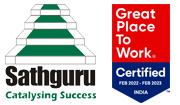[vc_row][vc_column][vc_column_text]
Pushpa Vijayraghavan, Director,Sathguru Management Consultants and Hansini Mutte, Consultant, Sathguru Management Consultants
As with most of the Indian healthcare delivery and devices market, the orthopedic devices segment is also growing at a CAGR of 20 percent year-on-year compared to global average of less than 6 percent. The Indian market is shared almost equally between the trauma and spine segments on the one hand and joints (knee and hip) on the other. The joints segment is currently dominated by multinationals and about 80 percent of the joint replacement implants used are imported. However, the trauma and spine segment is led by domestic manufacturers due to the lower production complexity and ability to offer competitive pricing, as factors such as endurance are of reduced importance.
We expect the robust growth to continue through the next decade. We peg the current industry size at USD 375 million and expect it to grow to USD 2.4 billion by 2030.
A Market in Transition
Several Indian companies are now aspiring to move up the value chain and have evolved from manufacturing low-tech screws and plates to building full-fledged knee or hip implant systems. These companies are leveraging technology collaborations to develop products comparable to those of multinationals, are actively pursuing global regulatory approvals, and have also realized the importance of strong clinical data to establish the reliability and technical sophistication of their products. They are focused on gaining domestic market share from multinationals and are also actively pursuing export markets. With support from a favorable policy environment and active funding landscape, we believe that these changes will drive sustainable structural shifts in the industry.
At the other end, multinational companies continue to aggressively target the Indian market with some of them setting up local research centers for product development. They are also strategically focused on expanding their market reach into lower-priced implants with certain companies expanding their portfolio with mid-segment products from the Chinese companies they have acquired.
Increase in Investment Activity
The high-growth segment continues to attract interest from multinational companies as well as Indian corporate groups, who will judiciously engage in pursing selective inorganic opportunities. We expect more active pursuit of M&A-supported to continued evolution of domestic manufacturers, who are moving up the value chain, aggressively gaining market share as well as valuations, and have developed strong clinical relationships and distribution strength.
Investment activity will also increase due to gradual consolidation in the fragmented trauma market, which will lead to more companies with stronger market share and more convincing acquisition rationale.
Further, the funding landscape has also evolved with emergence of more healthcare-focused private equity funds with appetite to fuel growth in mid-tier companies. They can help companies expand market
share or enter the high-value joint replacement segment. We perceive greater momentum in investments that range between USD 4 million and USD 15 million.
The Path Ahead
For Indian companies to gain a substantial foothold in the joints market, it is critical we nurture a more conducive environment for innovation pursuit, technology access, and commercial engagement. While threat of price control looms large on all companies, lack of common facilities for HA coating and validation of devices, negligible translational research engagement in domestic institutions, and continuing problem of lopsided duty structures (such as 7.5 percent import duty on ortho implants but 28 percent on titanium and unaffordable pricing of imported 316LVM grade of stainless steel) serve as a deterrent for accelerated growth of Indian industry.
It is critical that momentum in the industry is sustained at this pivotal stage. If fueled into heady tailwinds, the current wave of transition can propel the industry into a balanced one that could also evolve as a major export hub.
Source
Medical Buyer[/vc_column_text][/vc_column][/vc_row]


